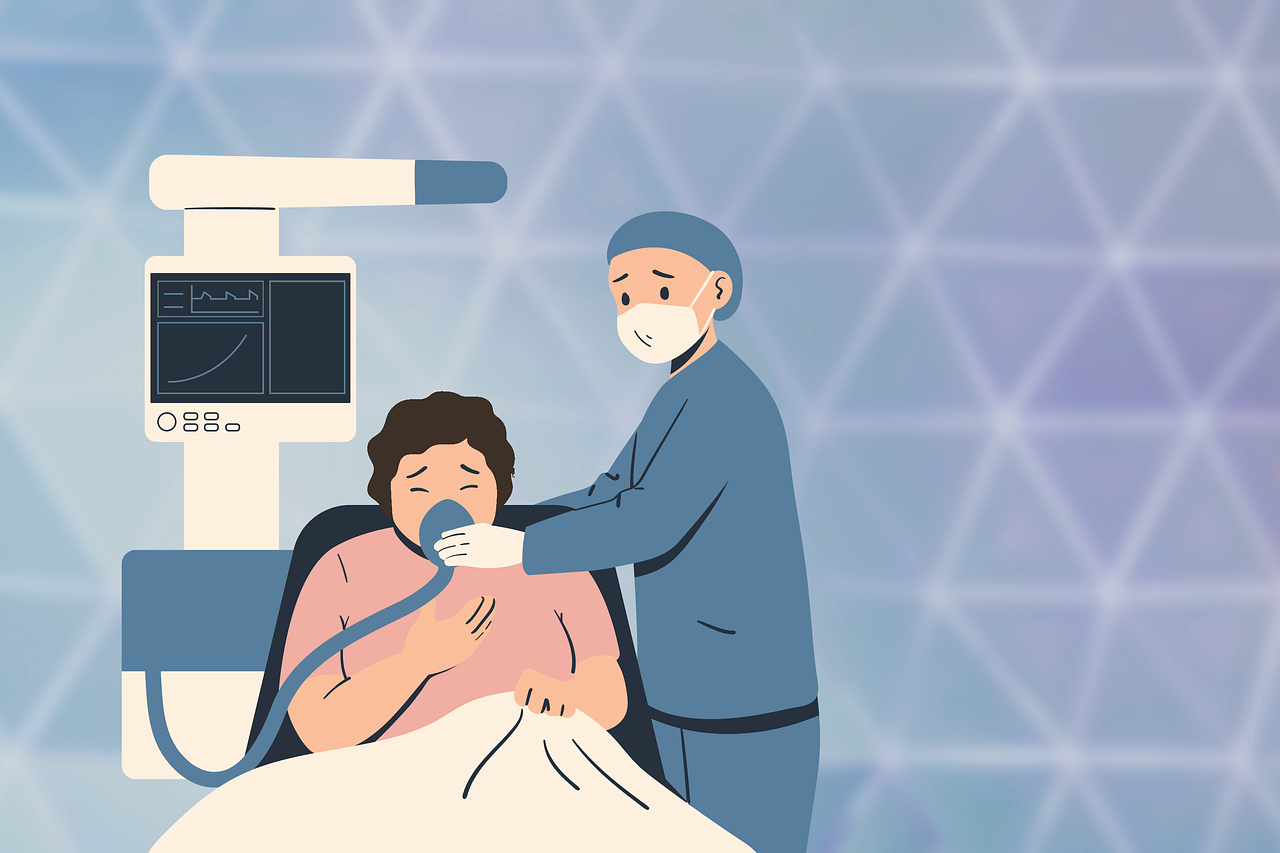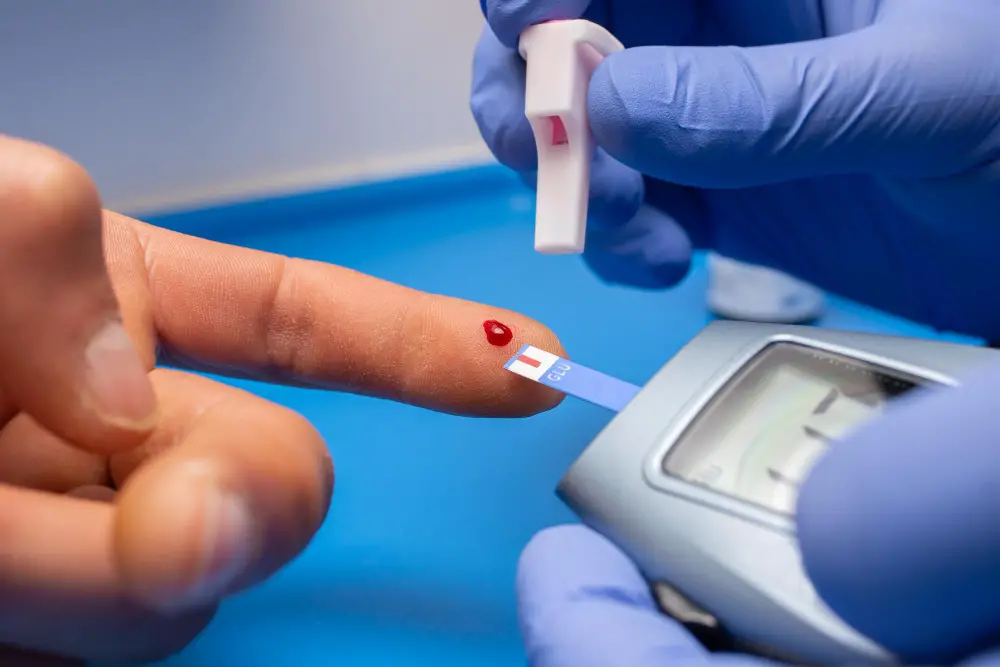
Atrial Fibrillation and Low Oxygen Saturation
-
- Dr. Junaid Arshad
- January 10, 2022
- 0 comments
Atrial Fibrillation (AF or afib) is the world’s most common rhythm disorder and it effects >33 million people in the entire world.
It substantially contributes to both morbidity and mortality and its incidence and prevalence both are on an increasing trend.
Can atrial fibrillation cause low oxygen saturation?
Atrial fibrillation can cause respiratory compromise and in severe cases may result in decreased oxygen saturation requiring supplemental oxygen. In certain conditions decreased oxygen saturation is primarily due to lung disease and afib occurs secondary to that lung pathology. Examples include pneumonia and pulmonary embolism.
5 reasons for low oxygen saturation with atrial fibrillation
Heart Failure with atrial fibrillation
Heart failure can occur secondary to atrial fibrillation even in patients with normal ejection fraction.
According to European Society of Cardiology 2020 guidelines, the incidence of heart failure with afib is as high as 20-30% & is one of the factors that contributes to increased mortality.
Heart failure causes breathing difficulty initially upon exertion and lying flat (orthopnea).
In extreme cases patients present with shortness of breath at rest and low oxygen saturation requiring supplemental oxygen via facemask & sometimes NIV (non-invasive ventilation) and even mechanical ventilation.
Mechanism of heart failure with afib
During AF atria (the upper two chambers of the heart) beat irregularly and ineffectively. This impairs the proper filling of the left ventricle and hence decreases cardiac output by 25%. [1]
Also, this promotes backflow of blood into the lungs and hence pulmonary edema.
Another possible mechanism for causing heart failure in afib patients is a very fast and irregular contraction of the ventricles. In a long run, this can cause tachycardia-induced cardiomyopathy. [2]
Diagnosis
In a patient of afib diagnosis of heart failure is usually by clinical examination.
Your doctor can put a stethoscope at the back of your chest to listen for harsh lung sounds called rales.
The presence of these sounds at the bases of both lungs is characteristic of heart failure.
In severe cases of heart failure and pulmonary edema, rales may be accompanied by expectoration of pink frothy sputum.
A Chest X-ray of the patient can help confirm the diagnosis.
The drug of choice for the treatment of afib with heart failure is digoxin.
Pneumonia with atrial fibrillation
Pneumonia (a chest infection) is a well-known trigger for afib and treating it may correct afib spontaneously.
The incidence of atrial fibrillation in patients with pneumococcal pneumonia is 10%, although the exact figures may vary among different studies.
In these patients usually, there is no history of heart disease, and patients present with a new-onset afib that may be associated with respiratory symptoms like shortness of breath or cough & respiratory failure causing low oxygen saturation. Fever may or not be present.
Recognizing pneumonia in these patients is extremely important because as the symptoms are overlapping, unrecognized pneumonia may prove fatal.
A summary of the case report is worth mentioning here.
Case report [3]
A 78 years old man presented to his physician with a chief complaint of leg edema for 1 day and shortness of breath for 2 days. He also complained of cough, malaise, fatigue, and weakness for 1 week. There was no history of fever.
Based on his ECG he was diagnosed as new-onset afib and was started on warfarin, digoxin, and diuretics.
The very next day patient again presented to the emergency room as his condition worsened.
Chest X-ray done showed left-sided pleural effusion, left-sided pulmonary infiltrate, right mid and upper zone infiltrates along with cardiomegaly.
He became acutely unstable and developed respiratory compromise to such an extent that he required intubation and mechanical ventilation.
Despite all possible therapy, the patient died on the 3rd day of admission.
Blood cultures obtained at admission showed Streptococcus pneumonia and autopsy revealed pneumonia of the lower left lobe.
The take-home from this case report is that whenever a patient presents with a new-onset afib, triggers like pneumonia should always be sorted out and treated. The respiratory symptoms like cough, shortness of breath, and low oxygen saturation in such patients are both due to afib and lung disease. Just treating afib can have dreadful consequences.
Pulmonary Embolism with atrial fibrillation
Patients with pulmonary embolism (PE) are at an increased risk of developing AF.
Statistics say that 15-21% of the patients with pulmonary embolism develop afib as compared to only 2-3% of the general population. [4]
The presence of AF secondary to pulmonary embolism is one of the reasons for low oxygen saturation in patients with atrial fibrillation.
Pulmonary embolism itself is a dangerous condition & is the 3rd largest cause of cardiovascular mortality, the 1st two being coronary artery disease and stroke, respectively. It occurs in 0.1% of the population annually and when combined with AF, it is associated with further worsening of outcomes. [5]
The risk factors for the development of new-onset afib with pulmonary embolism include massive pulmonary embolism, ischaemic heart disease, and congestive heart failure. [6]
Symptoms of atrial fibrillation and pulmonary embolism are overlapping, the most common being shortness of breath, palpitations, and tachycardia. This is the reason that the diagnosis of pulmonary embolism can easily be missed in patients presenting with afib.
The diagnosis of PE is confirmed on CTPA.
Echocardiography may also help in establishing the diagnosis.
Treating the PE may correct afib & restore sinus rhythm spontaneously.
Stroke and atrial fibrillation
Stroke is one of the most feared complications of afib that contributes to both morbidity and mortality.
According to European Society of Cardiology 2020 guidelines for atrial fibrillation, 20-30% of all ischemic strokes are due to afib. [7]
The brain has specific centers that regulate the respiratory system and maintain the oxygen levels in the blood. These primarily include the brainstem, the upper two-thirds of the medulla, and the pons. [8]
Whenever a stroke involves these specific areas, the normal process of respiration is affected and a patient can develop respiratory failure which might be severe enough to necessitate mechanical ventilation.
This is how afib can cause low oxygen saturation with stroke.
Thyrotoxicosis and atrial fibrillation
Thyrotoxicosis is another condition commonly associated with afib & may cause breathing issues.
Statistics say that 10-20% of people with hyperthyroidism develop afib and the incidence is more in the elderly.
According to a study, the incidence of atrial fibrillation within one month of the diagnosis of hyperthyroidism was 8% in all patients and 15% in patients with the age more than 70 years. [9]
Data has also suggested that even subclinical hyperthyroidism increases the risk of atrial fibrillation by three-folds. [10]
Hyperthyroidism can affect the respiratory system in the following 2 ways:
Diagnosing and treating hyperthyroidism is of utmost importance as treating it can correct afib spontaneously in 60% of the patients. [12]
Take Home
Whenever a patient presents with new-onset AF with breathing difficulty or low oxygen saturation, evaluation for triggers like pneumonia, pulmonary embolism, & thyrotoxicosis should always be done because if the underlying trigger remains undiagnosed, it can have dangerous outcomes and can even be fatal.
Latest Posts
-

-

Can You Use Expired Glucometer Test Strips? What You Need to Know
January 10, 2022 -

-

Categories
- Cardiology 32 Posts
- Diabetes 4 Posts
- Drugs 1 Post
- Infectious Diseases 2 Posts
- Sexual Health 3 Posts